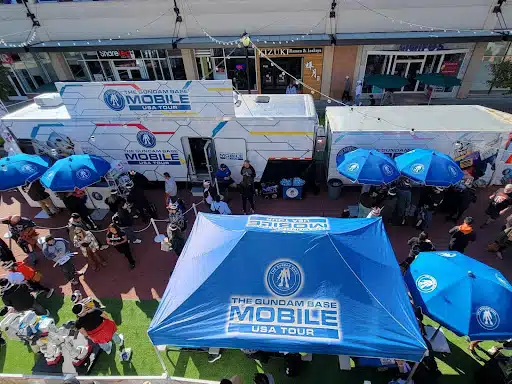How long does it take you to recognize the famous golden arches by the side of the road? How about the swoosh symbol on a pair of sleek sneakers? Or perhaps an apple with a bite mark on the back of someone’s phone? We haven’t named the brands in question here, but you already know which ones we’re talking about.
Brand awareness is the ability of the consumer to correctly identify or recall a brand in any type of circumstance. It is not a feature that is easily measured or quantified, and yet most – if not all – brands you come across are eager to increase their brand awareness and become one of the first names that come to mind if their category is mentioned. 84% of marketers name brand awareness as their top goal when it comes to content marketing.
The true champions of brand awareness are those who managed to transform their brand name into a verb or a synonym for their product category that is now regularly used in everyday speech. Just consider how much Googling you did today, or who you Zoom’d with last. Their brands have become so ubiquitous that we’re not even looking at them as brands anymore. Rather, they are entities that are ever-present in our lives and that we can always rely on, no matter the situation. No one can actually envision a future where Nike isn’t designing and selling sneakers, can they?
Why is brand awareness important?
Brand awareness, the ability to recall or remember a brand, is the first step in a relatively long process. At the end of this process, the consumer might decide to purchase from a brand they recognized and become their customer. There is no purchase if there is no brand awareness. When faced with the choice of drinking a Coke or an unknown can of soda, most consumers will reach for what they are familiar and comfortable with (i.e., the Coke). They will likely not even think twice about it. A Harvard Business School professor states that roughly 95% of purchase decisions happen subconsciously.
Additionally, brand awareness and customer engagement lead to repeat purchases as the consumer learns more about the brand and starts recognizing it more easily. Even though brand awareness is not a quantifiable metric, over time, it leads to increased profits and a boost in market share.
How to boost brand awareness
There is no one specific method to increase customer attention and brand awareness. And brands realize that Facebook advertising and Google ads aren’t the only digital marketing strategies to get in front of an audience. Rather, you should employ several different techniques to build your brand and generate more (and better) consumer response.
These are some of the most common ways of increasing brand awareness:
- Giving your brand a personality
- Telling a story through your brand
- Connecting with consumers on social media (and in real life)
- Making shareable content
- Creating memorable experiences
Different types of experiential events aim to differentiate your brand from the rest of the pack. Consumers respond to authenticity, transparency, trustworthiness, engagement, and brands that have a soul. A successful campaign for a new logo and a catchy slogan is useful, but if consumers are emotionally moved by your brand and its core values in any way, they are much more likely to remember it and opt to purchase from you when the time comes, further increasing sales. Those who have an emotional connection to a brand stay with that brand for longer and tend to recommend the brand at a higher rate, according to a study conducted by Motista.
Experiential marketing is a marketing tactic that encompasses all of the points here and is one of the most effective ways of embedding the name of your brand into the minds (and hearts) of consumers.
What is experiential marketing?
This is an engagement marketing strategy centered around creating experiences for consumers. It’s not about advertisement or promotion; it’s not necessarily about selling products or services. At least not at first. The purpose of experiential marketing is to help the brand emotionally connect with the consumer on a deeper level and to leave them with a lasting impression.
Experiential marketing strategies can be about an event, such as inviting people to try the product for free or organizing a showcase of some kind, but it also doesn’t need to have anything to do with the product itself. It can also be just about reinforcing the story of your brand and linking it to the goals and emotions you want your consumers to experience.
How successful experiential marketing benefits brand awareness
Generating more brand awareness is not the only benefit of experiential marketing, as we’ve discussed in some of our previous posts. When done right, it can be much more than product testing or a publicity stunt to get social shares. Experiential marketing is a highly effective strategy to help people recognize your brand and potentially want to engage with it.
Here are the most important advantages of experiential marketing when it comes to raising brand awareness:
1. Separating the brand from the ad clutter
It is estimated that an average American is exposed to anywhere between 4 thousand and 10 thousand ads in a single day. How can content marketers even hope to break through that waterfall of advertisements? To cope with such ad overexposure, consumers have developed ways of screening the ads without actually realizing it, and the promotions mostly end up ignored in favor of uninterrupted scrolling through the social media feeds.
To truly leave an impression on the consumer and help them remember the brand in the long run, experiential marketing doesn’t deal with standard ad types. Instead, it focuses on creating a memorable, immersive experience and full-sensory events for potential customers, all in an effort to take their breath away and convince them that this brand is the right choice.
2. Telling the brand story live
What is your brand’s story? Do you have one? We hope you do. Today’s consumers, especially the younger generations, look for substance in their brands. They want to find what makes the brand tick, who the people working for it are, how the founders got the idea for the brand, and how they developed it. They want to know more than the dry statistics and the faceless logo; they want to hear the story of your brand, to get to know its personality.
Using experiential marketing to increase brand awareness allows the brand to communicate its story to the consumers face-to-face. This is usually done through brand ambassadors who need to be approachable and down to earth but also knowledgeable about the brand and its core principles.
Additionally, you can tell the story of your brand even without brand ambassadors. Take the of Lean Cuisine and their #WeighThis campaign. In this single experiential event, they pivoted their story and their whole brand message from one focused on weight loss to one that embraces body positivity and intuitive eating. It’s remarkable what storytelling experiential campaigns can do.
3. Promoting authentic brand content
Generic promo posts and gimmicky events won’t even cause consumers to bat an eyelash anymore. If millennials and Gen Zers are your target audience, you will need to work hard and smart to win them over. Both of these generations are considered less loyal to and less trusting of brands than any generation that came before them. What they value more than attractive color combinations and discount prices is the authenticity of the brand.
If a brand is true to its words, consistent with its message, and puts its money where its metaphorical mouth is – it’s bound to rank high in the eyes of consumers.
Building brand authenticity isn’t an easy task. Experiential marketing tactics can help with this, especially if it’s set up in a way to reinforce what the brand stands for. Take Red Bull, for example, a brand that represents adrenaline, high-octane action, and daredevil stunts. To further promote this authentic image, it sponsors and organizes events that involve all of these feats and more (including an occasional breaking of a world record or two).
4. Creating memorable experiences
Finally, to solidify the consumers’ positive opinions about your brand and to make sure they will recognize it in the future, experiential marketing creates experiences they won’t forget. It doesn’t matter how big or how small the experiential marketing campaign is. It matters that it takes the consumer out of their daily routine for a moment. It provides them with the opportunity to unwind and have fun, to learn more about the brand they might want to support someday and to connect with other like-minded people.
There is little that can boost your brand awareness more than a fond memory of a happy moment that came to life thanks to your brand and its dedication to its consumers.
Want to work directly with an accomplished experiential marketing agency with 25 years of experience? Pro Motion is an industry leader in creating engaging, unique experiences, and effective marketing campaigns. Give us a call at 636.577.8507.
Learn More About Experiential Marketing from PMI President Steve Randazzo in his book Brand Experiences: Building Connections in a Digitally Cluttered World. Click here to download 2 free chapters




